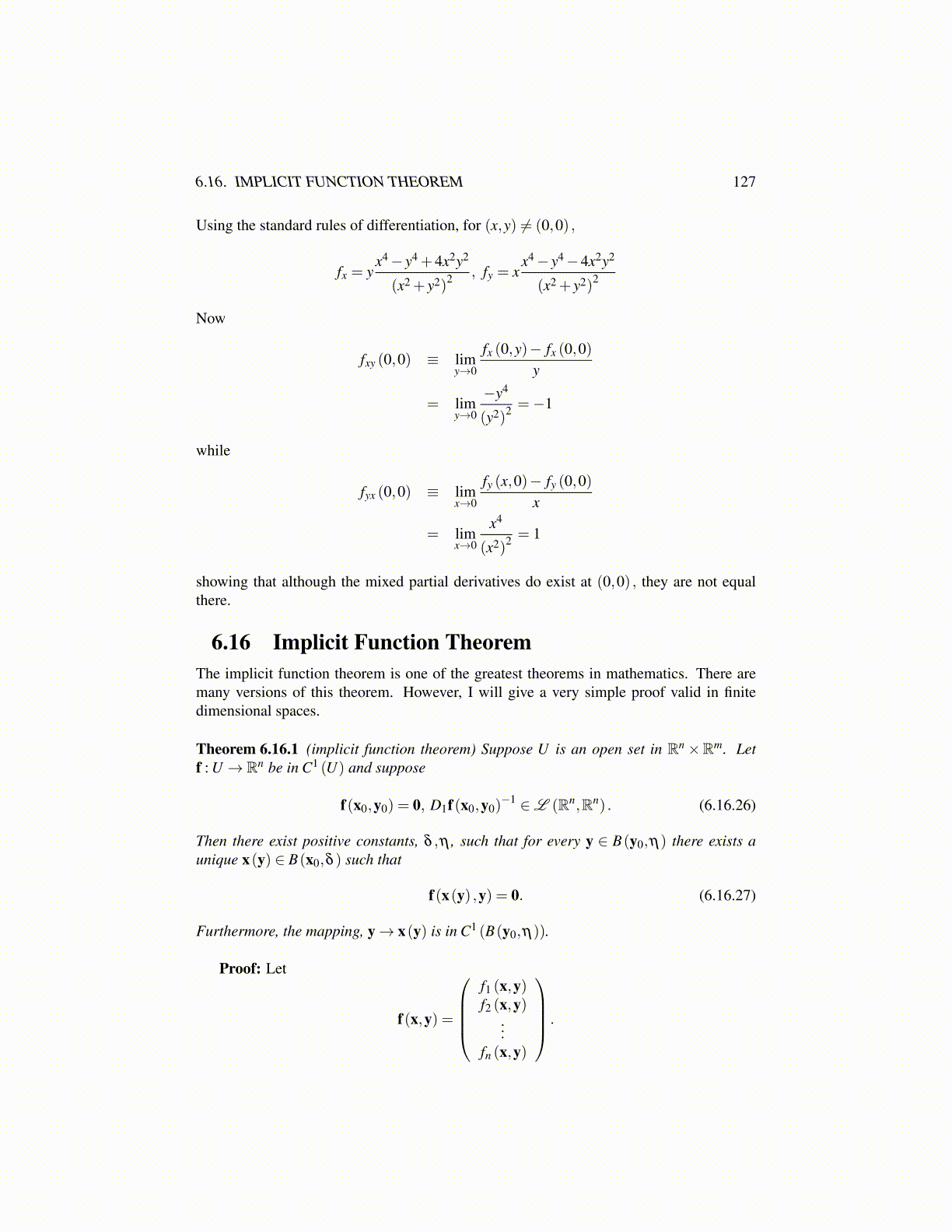
6.16. IMPLICIT FUNCTION THEOREM 127
Using the standard rules of differentiation, for (x,y) ̸= (0,0) ,
fx = yx4− y4 +4x2y2
(x2 + y2)2 , fy = xx4− y4−4x2y2
(x2 + y2)2
Now
fxy (0,0) ≡ limy→0
fx (0,y)− fx (0,0)y
= limy→0
−y4
(y2)2 =−1
while
fyx (0,0) ≡ limx→0
fy (x,0)− fy (0,0)x
= limx→0
x4
(x2)2 = 1
showing that although the mixed partial derivatives do exist at (0,0) , they are not equalthere.
6.16 Implicit Function TheoremThe implicit function theorem is one of the greatest theorems in mathematics. There aremany versions of this theorem. However, I will give a very simple proof valid in finitedimensional spaces.
Theorem 6.16.1 (implicit function theorem) Suppose U is an open set in Rn×Rm. Letf : U → Rn be in C1 (U) and suppose
f(x0,y0) = 0, D1f(x0,y0)−1 ∈L (Rn,Rn) . (6.16.26)
Then there exist positive constants, δ ,η , such that for every y ∈ B(y0,η) there exists aunique x(y) ∈ B(x0,δ ) such that
f(x(y) ,y) = 0. (6.16.27)
Furthermore, the mapping, y→ x(y) is in C1 (B(y0,η)).
Proof: Let
f(x,y) =
f1 (x,y)f2 (x,y)
...fn (x,y)
.